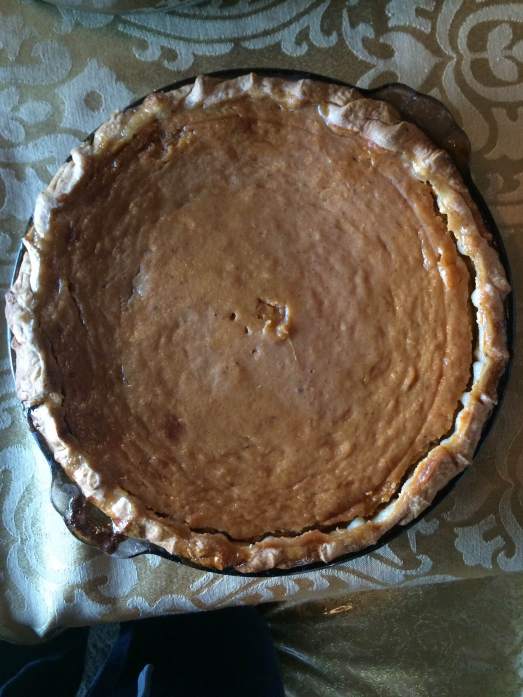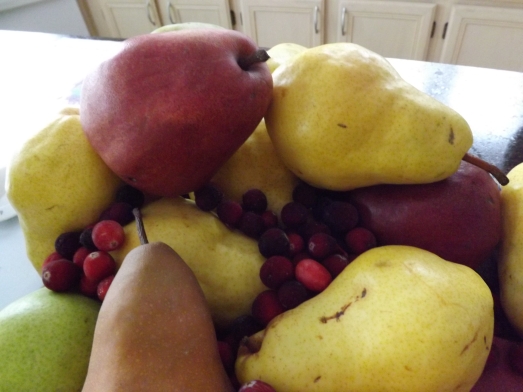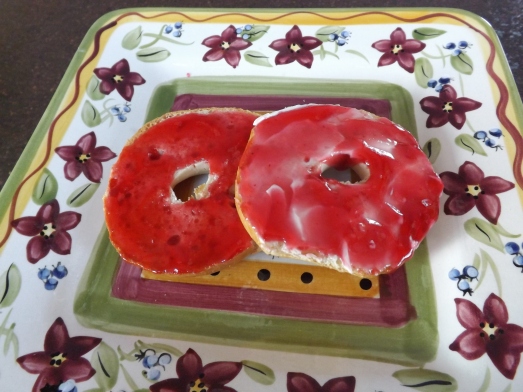Earlier this month I completed my first canning project of 2015 – sweet potatoes. I was thrilled with the 21 quarts of sweet potatoes I put on the pantry shelf and could hardly wait to start using them. This was the first time I had canned these and according to everything I’d read, home-canned sweet potatoes were excellent.

Last week I cracked open the first jar, drained off the water, added a bit of salt and a tablespoon of brown sugar and popped them in the oven. Thirty-five minutes later I pulled them out. The wonderfully sweet smell couldn’t be missed. Anxious to see if they tasted as sweet as they smelled, I snuck a taste before putting them on the table. Stabbing a potato with a fork, the potato broke right in half. Very tender. They smelled great, they were super tender, what more could I ask for?
Well, after eating the potato I had my answer: Taste, oh and perhaps a bit of texture. The sweet potatoes were tender that was for sure, tender to a fault. They were water-logged. And although the taste was there, that too was water-logged. I was completely disappointed.
Why? Why were my potatoes such a failure? In all the articles I’d read on the internet, not one complained of their potatoes being tasteless or water-logged. What had I done wrong? More importantly though, what could I do to remedy this situation? Or, if there was no remedy, what could I possibly use the remaining 20 quarts of potatoes for?
Feeling defeated, I decided to let the situation rest. I was far too upset to attempt a solution. At that point all I wanted to do was open every one of those remaining 20 quarts and pour them down the drain.
This happened a little over a week ago. Since then I have gone in the pantry countless times and seen those 20 quarts sitting on the shelf mocking me. The sick feeling in the pit of my stomach wasn’t quelling with time, so today I decided it was time to face the situation rather than hoping it’d somehow remedy itself.
The first issue I wanted to address was my desire to use these sweet potatoes for a side dish. Obviously using them straight out of the jar wasn’t going to work, so the only other option I could think of was to mash and bake them. I opened another jar this afternoon, drained the liquid, mashed them, added some cayenne pepper and chili powder, and popped them in the oven.
The kitchen filled with the sweet smell of potato and 30 minutes later I opened the oven door to check on them. Staring at the Corningware dish I knew immediately these were not going to be any better. Along the perimeter of the dish there was a distinct accumulation of liquid. I tried pouring it off, only to lose a good portion of the potatoes in the sink. They were runny.
Thinking that perhaps I could dry the potatoes out by cooking them longer and at a higher temperature, I increased the oven to 450 and let them cook another 30 minutes. When I pulled them out of the oven the potatoes looked better, but when I served them, the runny potatoes flattened out on the plates.
Still, I wanted to believe that not all was lost. I took a bite. Gross! These were even worse than the first batch I’d made. They were tasteless, runny, and had absolutely no texture.
Hubby and Grace told me they didn’t think the first batch I’d made were that bad. They just thought the texture was different but they could still eat them. This second batch was not edible.
So what went wrong? I raw packed them so it wasn’t that I over-cooked them prior to canning. I used water, so perhaps a sugar syrup would not be absorbed as much. What about the size I cut them? The only guideline for cutting the sweet potatoes was to cut them so they fit in the jar. I did cut them rather small, maybe if I cut them in bigger chunks they wouldn’t absorb as much water or syrup.
I hate this. Here I thought I had all these wonderful jars of sweet potatoes for my family safely stored on the pantry shelf and it turns out I not only wasted all that money on the potatoes, but also my time and energy. If I were a glass half-full type of person, I might consider this a good learning experience. Today though I am a glass half-empty type and just want to cry. I don’t accept failure well, especially when I don’t know why.
So what now? Well, I spent the rest of the afternoon working on several recipes that called for sweet potato. One was for sweet potato biscuits and the other for sweet potato bread. Hubby is crazy for the biscuits and although the bread is okay, I’d definitely have to add some raisins and/or dried cranberries and possibly some frosting to improve on it. Each of these recipes had to be tweaked because the sweet potato made the dough too wet, but the canned sweet potato did work.
Knowing these sweet potatoes can somehow be salvaged eases my disappointment, slightly. I hadn’t canned them for this purpose, but at this point anything is better than nothing. I have one more test I need to do with these potatoes before making up my mind if I will ever can sweet potatoes again — sweet potato pie. This is one recipe I did plan on using the canned potatoes for. I am concerned about the water content in the potatoes, but am hopeful that with some tweaking and a little trial and error, it’ll work.
Life is certainly not perfect, but through the imperfections we learn and hopefully grow. The trick to this is to not give up. Lord knows I wanted to throw in the towel, but so far I keep banging my head against this brick wall, and for this I am — Simply Grateful.

























